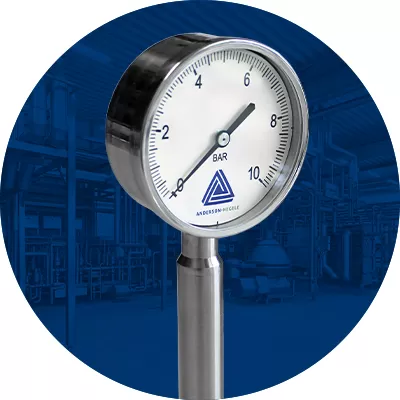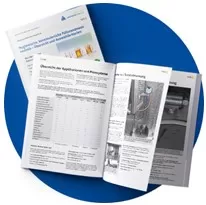Products
The right solution for every application and every process connection: Anderson-Negele temperature sensors are the benchmark for precision, quality and flexibility in hygienic applications.
For maximum resource efficiency, the accurate, continuous detection of level, volume or mass is essential. No matter which liquid and which application: Anderson-Negele has the right level measuring technology for precise, hygienic level measurement.
Point Level Sensors
Precise point level detection is an essential basis for maximum process and application reliability. Anderson-Negele level sensors offer the right measuring technology for all hygienic applications and even for foaming or pasty media.
The process pressure transmitters and pressure gauges developed and produced by Anderson-Negele are ideal for pressure measurement in pipelines and/or containers and are specially designed for the high requirements and standards of the food and beverage industry as well as for the pharmaceutical sector.
Always know exactly if and how much medium flows: Anderson-Negele flow switches and flowmeters offer a precise measuring principle and a high-precision application for almost all liquids in the food and pharmaceutical industries.
For many years, Anderson-Negele conductivity sensors have offered reliable and precise conductivity measurement for optimized and cost-saving CIP/SIP processes, production monitoring and quality assurance.
Turbidity measurement is an indispensable parameter for the automation of many processes. Anderson-Negele offers hygienic turbidity sensors for almost every application.
PMO and FDA compliant systems for the recording and evaluation of dairy, food, and beverage process are compulsory for many applications and help making process cycles more effective. You can choose from classic paper chart recorders or start your digital transformation with the Paperless Process Recorder PPR and LegendaryTM software.
Hygienically safe sensor installations: At Anderson-Negele you will find a wide portfolio of different hygienic and dead space-free process adaptations, tubes and installation systems.
Anderson-Negele offers technicians and engineers a wide range of professional tools. All of our devices have been designed by Anderson-Negele teams with the practical experience and knowledge to create measuring devices that meet today's demands.
The CLEANadapt adaptation system from Anderson-Negele with three different thread sizes is a system that cannot only be used with almost every Anderson-Negele sensor, but has been adopted as the standard by all other vendors.
The FDA Pasteurized Milk Ordinance (PMO) regulates the control of all batch as well as the more common continuous pasteurization processes in the US.
The Guardian recording thermometers and DS milk measurement system are specifically designed to continuously monitor the milk quality in farm bulk tank applications.
IO-Link
For the safe process control of an entire plant technology with a large number of measuring points, control and actuation devices, IO-Link offers significant advantages. After extensive testing of its practical suitability, we transfer this technology as a digital data transfer standard of the future on all measurement categories. We rely on our Flex-Hybrid technology with IO-Link parallel to the analog 4...20 mA connection.
Weighing systems for content measurement offer in many applications a more practical and precise solution than other measuring technologies. A comprehensive, field-proven sensor portfolio offers precise, robust, and efficient weighing systems for hygienic and non-hygienic applications, wet and dry goods, process, and storage vessels.




Copyright © 2022 Anderson-Negele